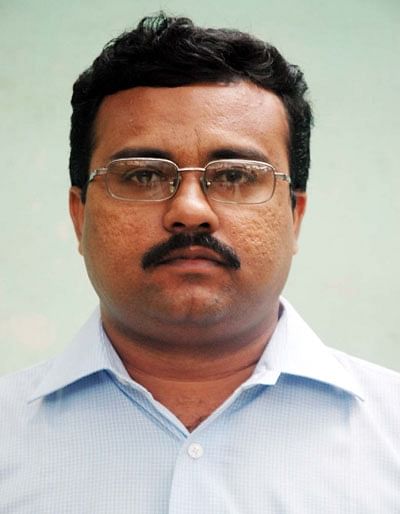India may have trilateral talks with US, Japan as tension with China escalates
With tension between India and China escalating, External Affairs Minister Sushma Swaraj may hold a meeting with her American and Japanese counterparts in New York next month.
New Delhi is planning to schedule a trilateral meeting between Swaraj, US Secretary of State Rex Tillerson and Japanese Foreign Minister Taro Kono on the sideline of the United Nations General Assembly in New York next month, sources told the DH.
If the meeting takes place, it will be the second India-Japan-US trilateral parley at the level of Swaraj and her American and Japanese counterparts. Swaraj, Tillerson's predecessor John Kerry and Kono's predecessor Fumio Kishida held the first such meeting in New York in September 2015.
New Delhi is keen to add impetus to India-Japan-US trilateral cooperation to send out a message to Beijing, at a time when India-China relations worsened over the military face-off between Indian Army and Chinese People's Liberation Army at Doklam Plateau in western Bhutan.
The current India-China face-off started on June 18 when soldiers form Indian Army's forward post at Doka La in Sikkim went to Doklam Plateau to stop personnel of Chinese PLA from constructing a road. The PLA soldiers had started building the road along the disputed border between Bhutan and China on June 16, brushing aside protests from Royal Bhutanese Army personnel deployed nearby. The intervention by Indian Army soldiers two days later resulted in the face-off, which has since been continuing.
New Delhi has been arguing that Indian Army had to intervene as the road the Chinese PLA had been building would have a serious security implication for India and would have unilaterally changed the status quo on India-China-Bhutan tri-junction boundary.
Tokyo's envoy to New Delhi, Kenji Hiramatsu, last week publicly endorsed the positions taken by India and Bhutan over the current stand-off between Indian Army and Chinese PLA. Japan asked China to stop trying to unilaterally change the status quo in Doklam Plateau.
Japan has over the past few years been taking a hard-line approach on its territorial disputes with China over Diaoyu or Senkaku islets in East China Sea. Tokyo is keen to foster closer ties between Japan and India in order to create a new “arc of freedom and prosperity” along with Australia, US and other democracies in the region – a vision that Beijing believes is targeted at China.
Japanese Prime Minister Shinzo Abe is also likely to visit New Delhi next month.
Washington has not yet publicly taken a side in India-China row over Doklam Plateau, but sent out a clear message to Beijing last week when US President Donald Trump called up Prime Minister Narendra Modi and the two leaders “resolved to enhance peace and stability across the Indo-Pacific region by establishing a new two-by-two ministerial dialogue” elevating strategic consultations between the two nations.
Swaraj and Tillerson will be joined by Defence Minister Arun Jaitley and American Secretary of Defence James Mattis for the new India-US 2+2 dialogue.
The US, according to the sources, is also keen to start a quadrilateral security dialogue with India, Japan and Australia in response to growing maritime assertiveness by China in Indian Ocean region.
In Swaraj's trilateral talks with Tillerson and Kono in New York next month, New Delhi is likely to focus on stepping up India-Japan-US cooperation in maritime security to counter China's hegemonic aspirations in Indo-Pacific, sources told the DH.
Since 2015, Japan's Maritime Self Defence Force has been participating in Malabar Naval Exercise, which was earlier a bilateral war drill by Indian and American navies. The last Malabar Exercise was held in Bay of Bengal in July this year. Australia is also keen to participate in the naval war-drill with Japan, India and US.
The meeting among Swaraj, Kerry and Kishida in New York in September 2015 marked elevation of the trilateral dialogue, which had been launched in 2011 as a mechanism for interactions among senior diplomats of the India, US and Japan. The elevation signalled growing convergence in strategic interests of New Delhi, Tokyo and Washington DC in Indo-Pacific. Beijing, however, viewed it as an attempt to contain China.
After their first trilateral meeting in New York in September 2015; Swaraj, Kerry and Kishida called for “peaceful settlement” of maritime disputes in accordance with international laws, “freedom of navigation and over-flight and unimpeded lawful commerce”, including in South China Sea. They also called for resolving the dispute in keeping with principles of international laws, including the 1982 United Nations Convention on the Law of the Sea.
The South China Sea has been at the centre of an escalating conflict between China and many of its neighbours – Brunei, Malaysia, Vietnam, Philippines and Taiwan.
Beijing last year rejected the ruling of an international arbitration tribunal, which rejected China’s claim for historic rights to islands on the disputed South China Sea. New Delhi, along with Washington and Tokyo, has been prodding Beijing to accept the award of the tribunal that was constituted in accordance with the UNCLOS.
China is strongly opposed to any role of US, Japan, India or any other country outside the region in the dispute and maintains that the row should be “peacefully resolved through dialogue and consultation between countries directly concerned”.
